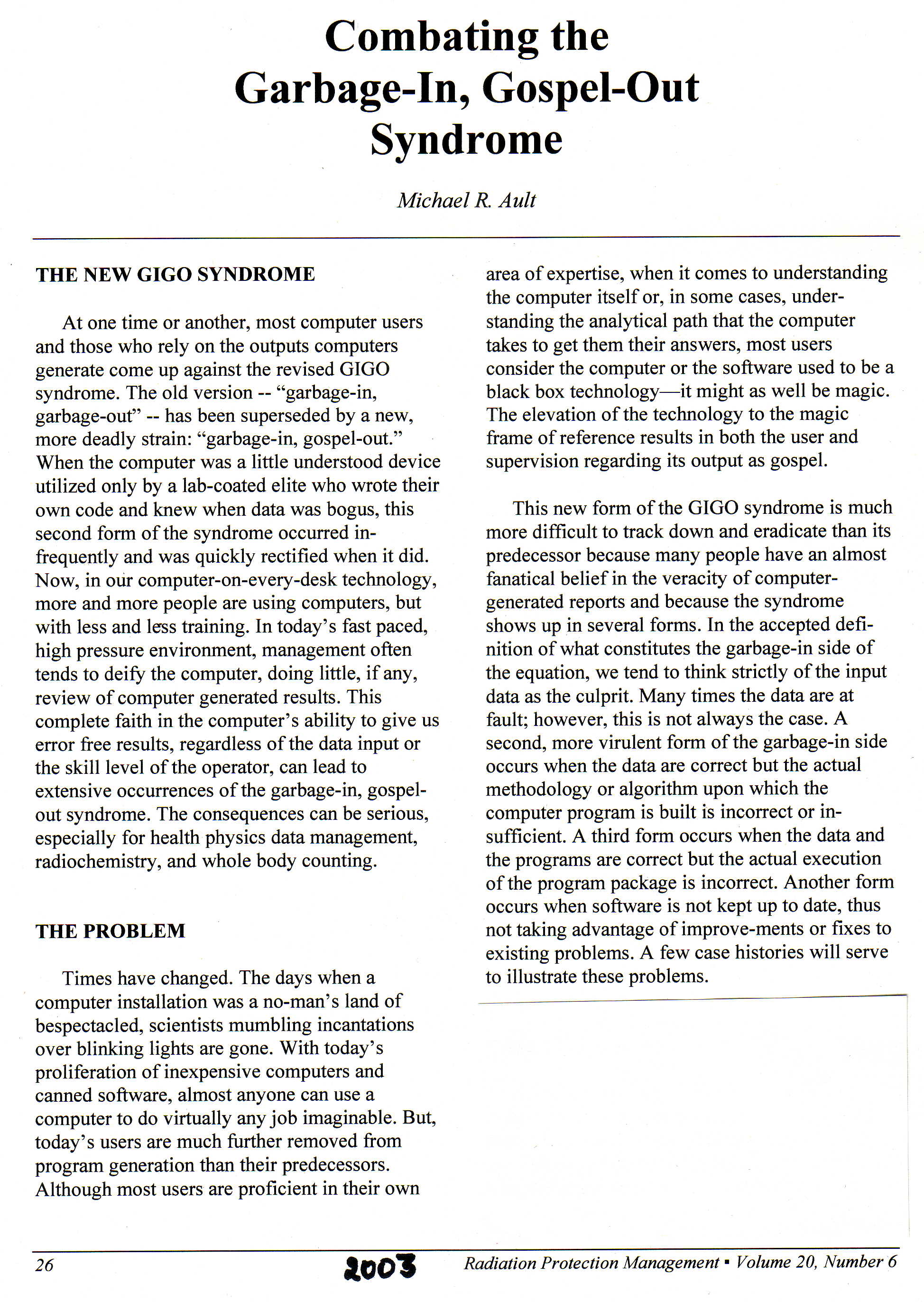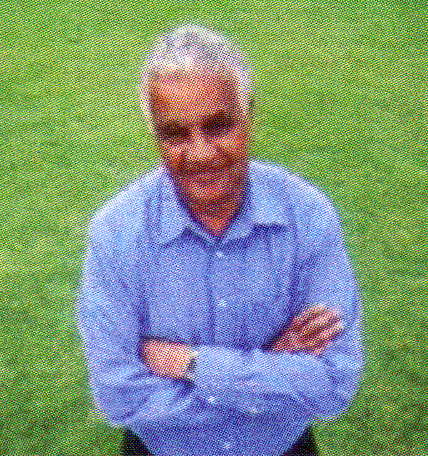by Sachi Sri Kantha, November 20, 2013
November 27th marks the Maaveerar Day remembrance. As such, I provide part 4 of the select chronological bibliography on Velupillai Prabhakaran and LTTE. Part 1, 2 and 3 were presented in 2009, 2010 and 2011 respectively. Cumulatively, I managed to compile 189 research papers published in English, in peer-reviewed international journals. Last year, I excused myself from this exercise, for the reason that I wished to contribute an essay as a primer on LTTE (‘Why did the Tamil Tigers became ferocious?’), for the benefit of non-Tamil speaking academics who churn out half-baked analysis on Tamil Tigers. As long as ‘terrorism’ and ‘suicide bombers’ remains the focus of gravy train for university academics, numerous policy institutes (so- called ‘think tanks’), and aid agencies, the deeds of LTTE will be in limelight.
For pompous mischief (and to my amusement!), I noted that Prof. Michael Roberts (previously at the University of Peradeniya, and currently having a post-retirement affiliated rank at the University of Adelaide, Australia), a Sri Lankan historian cum anthropologist had posted his twisted version of ‘Pirapaharan, LTTE and the Tamil struggle: a slanted bibliography’ in his Thuppahi’s Blog [http://thuppahi.wordpress.com/2012/05/17/pirapaharan-ltte-and-the-tamil-struggle-a-slanted-bibliography/] in May 2012. Why I say, it is a twisted version? Among the 38 items Roberts had included, 10 were authored solely by him! And he is illiterate in Tamil language! Then, we have 5 items authored by anti-LTTE scribe D.B.S. Jeyaraj. Not one among these five got published in a peer reviewed journal! And one among the included five items of Jeyaraj was about actor Sivaji Ganesan and not a word about Prabhakaran or LTTE in it! ‘Facts checking’ seems to be a burden for Oracles of Sri Lankan history like Michael Roberts. I guess, after reading this criticism, Prof. Roberts will silently delete such an item from his slanted bibliography.
Surely, the bibliography of Prof. Roberts was SLANTED indeed! The Microsoft Encarta Pocket dictionary (2004), defines the word, ‘slant’ with three meanings; (1) be or set at an angle. (2) make appealing to a particular group of people. (3) present in a biased way. What can one expect from a Sri Lankan history professor? Isn’t the prime source of Sri Lankan history (the obnoxious Mahavamsa chronicle authored by Mahanama or Mahavira Thero in 6th century) nothing but a slanted history?
This year’s part 4 compilation will reveal that the GIGO (Garbage In Garbage Out) syndrome on LTTE continues unabated. Lately, the GIGO syndrome has morphed into ‘Garbage In Gospel Out’ format. Kindly check the first page of the scan of an article by Michael R. Ault (that appeared in Radiation Protection Management journal, in 2003) which I provide nearby. For the past 15 years or so, the ‘Gospel’ has been terrorism. Prior to that (1918 to circa 1990), the ‘Gospel’ was communism. Before that (whole of 19th century), the ‘Gospel’ was ‘Colonialism and Overt Racism’. The current ‘Gospel’ terrorism also incorporates within itself ‘Covert Racism’. As long as the funding gravy train doles out cash for any studies on terrorism gospel, there will be no dearth for incompetent academics to prance their feathers with books and research papers loaded with muck.
One of the marquee names in terrorism studies these days is Professor Audrey Kurth Cronin (born 1958). She had authored a book, How Terrorism Ends: Understanding the decline and demise of terrorist campaigns (Princeton University Press, 2009). At that time, she was “professor of strategy at the U.S. National War College in Washington DC”. In it, she does present her distorted views about LTTE. Who cares about the real facts, as long as the ‘garbage inserted, serves to spread the ‘Gospel’ of waging war against terrorism? What was interesting for me in this book was how Prof. Cronin defines ‘terrorism’. This is how, she describes what constitutes terrorism. “Terrorism is notoriously difficult to define, in part because the term has evolved and in part because it is associated with an activity that is designed to be subjective. Specialists have devoted hundreds of pages to developing an unassailable definition of the term, only to realize the fruitlessness of their efforts: Terrorism is intended to be a matter of perception and is thus seen differently by different observers and at different points in history.” This sort of wishy-washy thinking is bound to rise, if one includes LTTE as a terrorist organization, and excludes CIA or MOSSAD or RAW as a non-terrorist organization.
So, as a minimal criterion, Prof. Cronin settles for the following: “At a minimum, the concept has the following characteristics: a fundamentally political nature, the symbolic use of violence, purposeful targeting of noncombatants, carried out by nonstate actors.” Both, LTTE as well as CIA or MOSSAD or RAW do qualify as a terrorist organization under these four characteristics. CIA (operating in Iraq or Afghanistan) and MOSSAD (operating in lands other than Israel) are technically ‘nonstate actors’ in their field of operation. So, why they are not included as terrorist organizations? Pundits like Robert A. Pape and Audrey Cronin will never answer this dilemma.
Prof. Cronin also had published a paper in 2012 under the title, ‘U.S. Grand Strategy and Counterterrorism’. Now, she is affiliated to the George Mason University. Though this particular paper of hers relates to Al-Qaeda organization of Osama bin Laden, she does make a passing mention to LTTE. Her premise was that, terrorist organizations engage in three types of ‘strategies of leverage’, namely provocation, polarization and mobilization.

I sent Prof. Cronin an email on November 16th. The contents of it are as follows:
“Dear Prof. Audrey Kurth Cronin:
I’m an associate professor at the Gifu University, Japan, and an ethnic Tamil from Sri Lanka. Just now, I had completed reading your 2012 paper ‘U.S. Grand Strategy and Counterterrorism’ that appeared in the Orbis journal (2012; 56: 192-214). As I’m currently compiling a bibliography on Tamil Tigers (LTTE), I was directed to your paper.
After reading your Orbis journal paper in entirety, I realized that your main focus was al- Queda. But passingly you make mention of LTTE in one sentence as follows: “Examples of other groups that deliberately tried to polarize societies include the Tamil Tigers (LTTE) in Sri Lanka and the Provisional Irish Republican Army (PIRA) in Northern Ireland. I will
challenge this thought of yours. It was not the LTTE but the Sinhalese dominated Sri Lankan government which had polarized the Sri Lankan society since 1956 – when V. Prabhakaran, the leader of LTTE was a toddler.
I wonder whether you have really focused your research on Sri Lankan politics of the past. May I also know, whether you are literate in Tamil language to comment on the activities of Tamil Tigers? Have you ever visited the Tamil regions of Sri Lanka? I’d like to hear from you, so that I can incorporate your paper in my LTTE bibliography. I assure you that whatever response you provide, will be added to my bibliography, without any deletion. Best regards.”
As of today (Nov. 21), I haven’t heard from Prof. Cronin. I could only sympathize with her incompetence of recent Sri Lankan history. So that the data should fit her ‘Gospel’, she applies Procrustean logic to distort the real history. It was not the LTTE which polarized the society. It was the majoritarian Sri Lankan government that polarized the Sri Lankan society. LTTE wouldn’t have originated, if the Sri Lankan government never executed its racist, Sinhala-Only recruitment policy to armed forces in 1962. If and when I hear from Prof. Cronin, I’ll add it as a postscript to this bibliography. Thus, I can only caution the users of this bibliography to double check the sources from where the presented research materials were derived.
Chronological Bibliography on Prabhakaran and LTTE: Part 4
Only research papers published in journals are included here. Book reviews that appear in journals have been excluded. Publications prior to 2010, which have not been listed in parts 1, 2 and 3, are also included in chronological sequence. For inclusion in this bibliography, mere mention of Liberation Tigers of Tamil Eelam (LTTE) won’t pass muster. Something substantial about LTTE should be included either in the text or in presented tables and figures. Altogether, 50 items are listed below.
Daya Somasundaram. Abandoning Jaffna Hospital: Ethical and moral dilemmas. Medicine, Conflict and Survival, 1997; 13(4): 333-347.
Darren C. Zook: A place called Serendib: on war, peace and silence in Sri Lanka. Threepenny Review, autumn 1999; no. 79: 17-20.
Rachel Tribe, Padmal de Silva: Psychological intervention with displaced widows in Sri Lanka. International Review of Psychiatry, 1999; 11: 184-190.
Brigg Reilley, Isabel Simpson, Nathan Ford, Marc DuBois: Conflict in Sri Lanka – Sri Lanka’s health service is a casualty of 20 years of war. British Medical Journal, Feb.9, 2002; 324: 361-362.
Simetka O, Reilley B, Joseph M, Collie M, Leidinger J: Obstetrics during civil war: six months on a maternity ward in Mallavi, northern Sri Lanka. Medicine, Conflict and Survival, July-September 2002; 18(3): 258-270.
Collie M: Challenges of war surgery in Mallavi, Sri Lanka. Medicine, Conflict and Survival, January-March 2003; 19(1): 45-48.
Miranda Alison: Cogs in the wheel? Women in the Liberation Tigers of Tamil Eelam. Civil Wars, winter 2003; 6(4): 37-54.
Dana C. Covey: Musculoskeletal war wounds during Operation BRAVA in Sri Lanka. Military Medicine, Jan. 2004; 169: 61-64.
Margaret P. Battin: The ethics of self-sacrifice: what’s wrong with suicide bombing? Archives of Suicide Research, 2004; 8(1): 29-36.
Benedikt Korf : War, livelihoods and vulnerability in Sri Lanka. Development and Change, 2004; 35(2): 277-297.
Sandesh Sivakumaran: Sexual violence against men in armed conflict. European Journal of International Law, 2007; 18(2): 252-276.
Kim Jordan, Myriam Denov: Birds of Freedom? Perspectives on Female emancipation and Sri Lanka’s Liberation Tigers of Tamil Eelam. Journal of International Women’s Studies, Nov. 2007; 9(1): 42-62.
Daya Somasundaram. Collective trauma in northern Sri Lanka: a qualitative psychosocial-ecological study. International Journal of Mental Health Systems, 2007, 1:5 (27 pages).
Doi: 10.1186/1752-4458-1-5.
Hans-George Bohle, Hartmut Funfgeld: The political ecology of violence in eastern Sri Lanka. Development and Change, 38(4): 665-687.
Asoka Girihagama: Teaching Tamil Tigers. Medical Journal of Australia, May 5, 2008; 188: 544.
Sri Lanka College of Paediatricians: Teaching Tamil Tigers. Medical Journal of Australia, May 5, 2008; 188: 544-545.
John S.Whitehall: Teaching Tamil Tigers. Medical Journal of Australia, May 5, 2008; 188: 545.
Martin B. Van Der Weyden (editor of Medical Journal of Australia). Teaching Tamil Tigers. Medical Journal of Australia, May 5, 2008; 188: 545.
Shawn Teresa Flanigan: Staff perceptions of the benefits of religion in health and human services nonprofits: evidence from international development. Journal of Health and Human Services Administration, Fall 2009; 32(2): 164-194.
Leonard S. Rubenstein, Melani D. Bittle: Responsibility for protection of medical workers and facilities in armed conflict. Lancet, Jan. 23, 2010; 375: 329-340.
Mia Bloom: Bombshells: Women and terror. Gender Issues, 2011; 28: 1-21.
Rachel Tribe, Harriet Calvert: Moving forward together? Legacy issues and well-being in post war Sri Lanka. International Journal of Migration, Health and Social Care, 2011; 7(3): 131-138.
Harriet Calvert: How do we help children and families in the midst of collective trauma in Sri Lanka. International Journal of Migration, Health and Social Care, 2011; 7(3): 139-147.
Emilia Fagerlund: The Tiger’s Roar; Insurgent violence against civilians in Sri Lanka. Psychology and Society, 2011; 4(1): 96-116.
Jordans MJD, Komproe IH, Tol WA, Susanty D, Vallipuram A, Ntamatumba P, Lasuba AC, De Jong JTVM: Practice-driven evaluation of a multi-layered psychosocial care package for children in areas of conflict. Community Mental Health Journal, 2011; 47: 267-277.
Brock Blomberg S, Khusrav Gaibulloev, Todd Sandler: Terrorist group survival; ideology, tactics and base of operations. Public Choice, 2011; 149: 441-463.
Erin Miller: Patterns of onset and decline among terrorist organizations. Journal of Quantitative Criminology, 2012; 28: 77-101.
Jannie Lilja: Trust and Treason: social network structure as a source of flexibility in peace negotiations. Negotiation and Conflict Management Research, February 2012; 5(1): 96-125.
Christina P. Davis: ‘Is Jaffna Tamil the Best?’ Producing ‘Legitimate’ language in a multilingual Sri Lankan school. Journal of Linguistic Anthropology, 2012; 22(2): E61-E82.
Bart Klem: In the eye of the storm: Sri Lanka’s front-line civil servants in transition. Development and Change, 2012; 43(3): 695-717.
Sebastian H. Lukasik: Insurgent airpower in historical perspective: an introduction and prospectus for research. Historian, 2012; 74(2): 217-240.
Eliot Marshall: Parsing terrorism. Science, 18 May 2012; 336: 820-823.
Sandra Destradi: India and Sri Lanka’s civil war – the failure of regional conflict management in South Asia. Asian Survey, May-June 2012; 52(3): 595-616.
Joshua Lyons: Documenting violations of international humanitarian law from Space: a critical review of geospatial analysis of satellite imagery during armed conflicts in Gaza (2009), Georgia (2008) and Sri Lanka (2009). International Review of the Red Cross, June 2012; 94: 739-763.
Jonathan Spencer: Performing democracy and violence, agonism and community, politics and not politics in Sri Lanka. Geoforum, 2012; 43: 725-731.
Reade C, Lee HJ: Organizational commitment in time of war: assessing the impact and attenuation of employee sensitivity to ethnopolitical conflict. Journal of International Management, 2012; 18: 85-101.
Prema-chandra Athukorala: Indian Ocean tsunami; disaster, generosity and recovery. Asian Economic Journal, 2012; 26(3): 211-231.
Mark Laffey, Suthaharan Nadarajah: The hybridity of liberal peace: states, diasporas and insecurity. Security Dialogue, October 2012; 43(5): 403-420.
Vidyamali Samarasinghe: ‘A Theme Revisited’? The impact of the ethnic conflict on women and politics in Sri Lanka. Journal of Women, Politics & Policy, 2012; 33(4): 345-364.
Anton W. Weenink: Situational prevention of terrorism. Remarks from the field of counter terrorism in the Netherlands on Newman and Clarke’s Policing Terrorism. Trends in Organized Crime, 2012; 15: 164-179.
Daya Somasundaram, Sambasivamoorthy Sivayokan: Rebuilding community resilience in a post-war context: developing insight and recommendations – a qualitative study in Northern Sri Lanka. International Journal of Mental Health Systems, 2013; 7: 3 (24 pages).
Doi: 10.1186/1752-4458-7-3.
Selvadurai SD, Smith MLR: Black Tigers, Bronze Lotus: The evolution and dynamics of Sri Lanka’s strategies of dirty war. Studies in Conflict & Terrorism, 2013; 36(7): 547-572.
Jonathan Spencer: A certain gesture: Reflections on the murder of Sivaram. Journal of Historical Sociology, March 2013, 26(1): 83-99.
Sharika Thiranagama: The self at a time of war in Northern Sri Lanka. Journal of Historical Sociology, March 2013; 26(1): 19-40.
Shahul Hasbullah, Benedikt Korf: Muslim geographies, violence and the antinomies of community in eastern Sri Lanka. Geographical Journal, March 2013; 179(1): 32-43.
Rebecca Walker: Taking a back seat: the uses and misuses of space in a context of war and natural disaster. Journal of Human Rights, 2013; 12(1): 69-86.
Ishan Ashutosh: Immigrant protests in Toronto: diaspora and Sri Lanka’s civil war. Citizenship Studies, April 1, 2013; 17(2): 197-210.
Sasini T.K. Kulatunga, Rajith W.D. Lakshman: Responding to security threats; livelihoods under protracted conflict in Sri Lanka. Disasters, 2013; 37(4): 604-626.
Dinuk Jayasuriya: Influence of post-traumatic growth on mental health and well-being across respondents severely affected by war in post-conflict Sri Lanka. Social Indicators Research, 2013 (published online DOI 10.1007/s11205-013-0484-7)
Jessica Lehman: Expecting the sea: the nature of uncertainty on Sri Lanka’s East Coast. Geoforum, 2013 (in press). http://dx.doi.org/10.1016/j.geoforum.2013.05.010


Like a stem and Rose, prabha is inseparable from Tamil community!